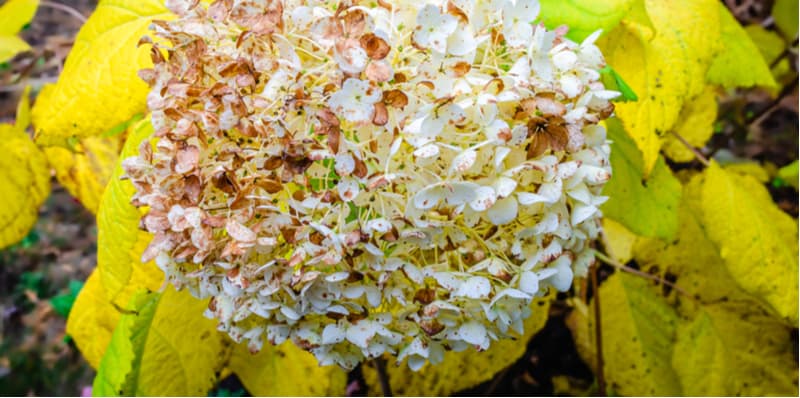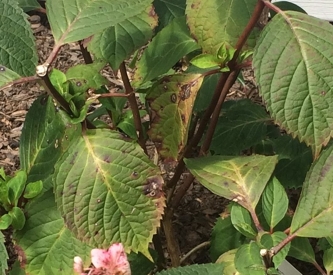The 4-Minute Rule for Hydrangea Leaves Turning Yellow
Wiki Article
Everything about Hydrangea Leaves Turning Yellow
Table of ContentsThe Buzz on Hydrangea Leaves Turning YellowHydrangea Leaves Turning Yellow Can Be Fun For EveryoneThe Ultimate Guide To Hydrangea Leaves Turning YellowThe 2-Minute Rule for Hydrangea Leaves Turning Yellow
Big leaves typically look saggy during the afternoon warmth. When they fail to perk up in the evening or still look shrivelled in the early morning, your plant might be overwatered.Eliminate the plant from the dirt and prune out any origins that aren't white and turgid (plump). Replant in a brand-new location or function some sand into the soil for much better water drainage.
Add a bit of distilled water, mix the ingredients, and drain pipes the extra water. Put a p, H testing strip in and wait for a reading.
The very best method to do that is with dirt changes. Sphagnum moss or peat moss prevents the soil from condensing and betters dirt drainage while additionally elevating the soil's level of acidity. You can scatter sulfur chips in your hydrangea dirt. Nonetheless, the most convenient means is to simply utilize a plant food that aids maintain the right acidity in the dirt while also feeding the plant.
The Ultimate Guide To Hydrangea Leaves Turning Yellow
This is one great reason to repot houseplants consistently (though there are others, such as origin advancement as an example). It is also why houseplants call for a much stricter feeding regular than the majority of outside plants. When a hydrangea houseplant lacks nutrients, its leaves will certainly be the very first to show the indications.
You will certainly likewise require to feed the plant by hand and regular periods. When springtime begins in March, it's the active expanding season for lots of houseplants, consisting of hydrangeas.
The dripline is the area located under the vegetation that is the furthest away from the facility of the plant. Instead than using feed to the center of the plant it is best to concentrate it mostly in the outer areas of the pot. If next page you would certainly instead use a slow-release plant food such as granular or spike fertilizer, then cover either type with some dirt after you insert them.
Hydrangea Leaves Turning Yellow for Dummies

Although the hydrangea is surprisingly frost-resistant, as soon as temperatures start entering the 20s, the plant is in significant risk. If the temperatures remain in the low 10s, that threat is extra extreme still. Undoubtedly this is more of an interest in exterior plants so if you maintain potted hydrangea outside you should bring them inside in very cold climate conditions and even think about relocating them inside for the duration of the winter months.

A dried hydrangea, A huge trouble with numerous houseplants is root rot. Root rot takes place when you overwater a plant and due to the fact that it is such an usual trouble (particularly with succulents) several houseplant owners are scared of overwatering their plants. Hydrangeas call for more watering that a lot of various other usual houseplants and can come to be dehydrated when they are underwatered.
Hydrangea Leaves Turning Yellow Fundamentals Explained
Be definitely sure that your hydrangea is dehydrated due to an absence of water and not due to it be offered as well much water (a lot more on this later). Overwatering is a major issue if you cut corners on its water requirements even a little bit, your hydrangea will certainly be quick to reveal it., you will promptly inform if the plant requires water. To get your hydrangea watering practices on the best track, you need to be conscious concerning the dampness degrees in its dirt.
When you remove your finger from wet dirt it her latest blog will certainly have tiny amounts of soil deposit stuck to it. Dry soil will certainly indicate your finger comes out clean or with dry soil that is conveniently blown away. If it's moist, and the plant has yellow fallen leaves after that the plant has likely been overwatered and you will require to comply with the guidance given up the section listed below.
Report this wiki page